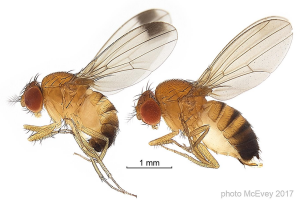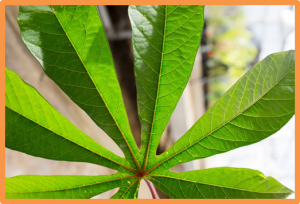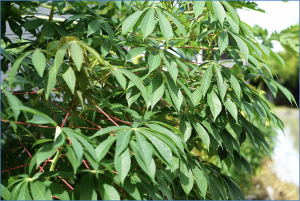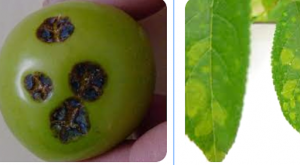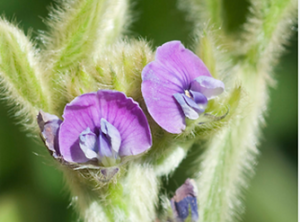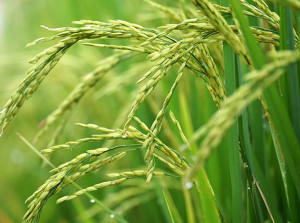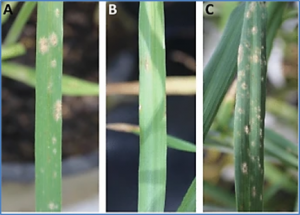Genetic-based methods offer environmentally friendly species-specific approaches for control of insect pests. One method, CRISPR homing gene drive that target genes essential for development, could provide very efficient and cost-effective control. While significant progress has been made in developing homing gene drives for mosquito disease vectors, little progress has been made with agricultural insect pests
Rice, as a major staple crop, employs multiple strategies to enhance drought tolerance and subsequently increase yield. Osmotin-like proteins have been shown to promote plant resistance to biotic and abiotic stress. However, the drought resistance mechanism of osmotin-like proteins in rice remains unclear. This study identified a novel osmotin-like protein, OsOLP1, that conforms to the structure and characteristics of the osmotin family and is induced by drought and NaCl stress.
Drought is a major abiotic stress to rice (Oryza sativa) during growth. Ideal Plant Architecture (IPA1), the first cloned gene controlling the ideal plant type in rice, has been reported to function in both ideal rice plant architecture and biotic resistance. Here, we report that the IPA1/OsSPL14, encoding a transcriptional factor, positively regulates drought tolerance in rice. The IPA1 is constitutively expressed and regulated by H2O2, abscisic acid, NaCl and polyethylene glycol 6000 treatments in rice.
Cassava mosaic disease (CMD) is caused by several divergent species belonging to the genus Begomovirus (Geminiviridae) transmitted by the whitefly Bemisia tabaci cryptic species group. In India and other parts of Asia, the Indian cassava mosaic virus-Kerala (ICMV-Ker) is an emergent begomovirus of cassava causing damage that results in reduced yield loss and tuber quality. Double-stranded RNA-mediated interference (RNAi) is an evolutionary conserved mechanism in eukaryotes and highly effective, innate defense system to inhibit plant viral replication and/or translation.
The endophytic nitrogen-fixing bacterium A02 belongs to the genus Curtobacterium (Curtobacterium sp.) and is crucial for the nitrogen (N) metabolism of cassava(Manihot esculenta Crantz). We isolated the A02 strain from cassava cultivar SC205 and used the 15N isotope dilution method to study the impacts of A02 on growth and accumulation of N in cassava seedlings. Furthermore, the whole genome was sequenced to determine the N-fixation mechanism of A02.
Plum (Prunus salicina L.) is a traditional fruit in Southern China and is ubiquitous throughout the world. In August 2021, leaves of plum trees showed water-soaking spots and light yellow-green halos with incidence exceeding 50% in Babu district in Hezhou, Guangxi (N23°49'-24°48', E111°12'-112°03'). To isolate the causal agent, three diseased leaves collected from three different trees growing in different orchards were cut into 5 mm × 5 mm pieces, disinfected with 75% ethanol for 10 sec, 2% sodium hypochlorite for 1 min and rinsed three times in sterile water.
Recombination allows for the exchange of genetic material between two parents, which plant breeders exploit to make improved cultivars. This recombination is not distributed evenly across the chromosome. Recombination mostly occurs in euchromatic regions of the genome and even then, recombination is focused into clusters of crossovers termed recombination hotspots.
Plants have evolved various mechanisms for low P tolerance, one of which is changing their membrane lipid composition by remodeling phospholipids with non-phospholipids. The objective of this study was to investigate the remodeling of membrane lipids among rice cultivars under P deficiency. Rice (Oryza sativa L.) cultivars (Akamai, Kiyonishiki, Akitakomachi, Norin No. 1, Hiyadateine, Koshihikari, and Netaro) were grown in 0 (-P) and 8 (+P) mg P L-1 solution cultures.
The expression of STK was rapidly induced by ABA. STK was highest expressed in the stem at the heading stage. STK was localized at the plasma membrane. Overexpression of STK in rice increased tolerance to salt stress and oxidative stress by increasing ROS scavenging ability and ABA sensitivity. In contrast, CRISPR/Cas9-mediated knockout of STK increased the sensitivity of rice to salt stress and oxidative stress.
Barley powdery mildew is a globally significant disease, responsible for reduced grain yield and quality. A major effect adult plant resistance gene, RBgh2, was previously found in a landrace from Azerbaijan. The atypical phenotype suggested different underlying genetic factors compared to conventional resistance genes and to investigate this, genome-wide gene expression was compared between sets of heterogeneous doubled haploids.


 Curently online :
Curently online :
 Total visitors :
Total visitors :
